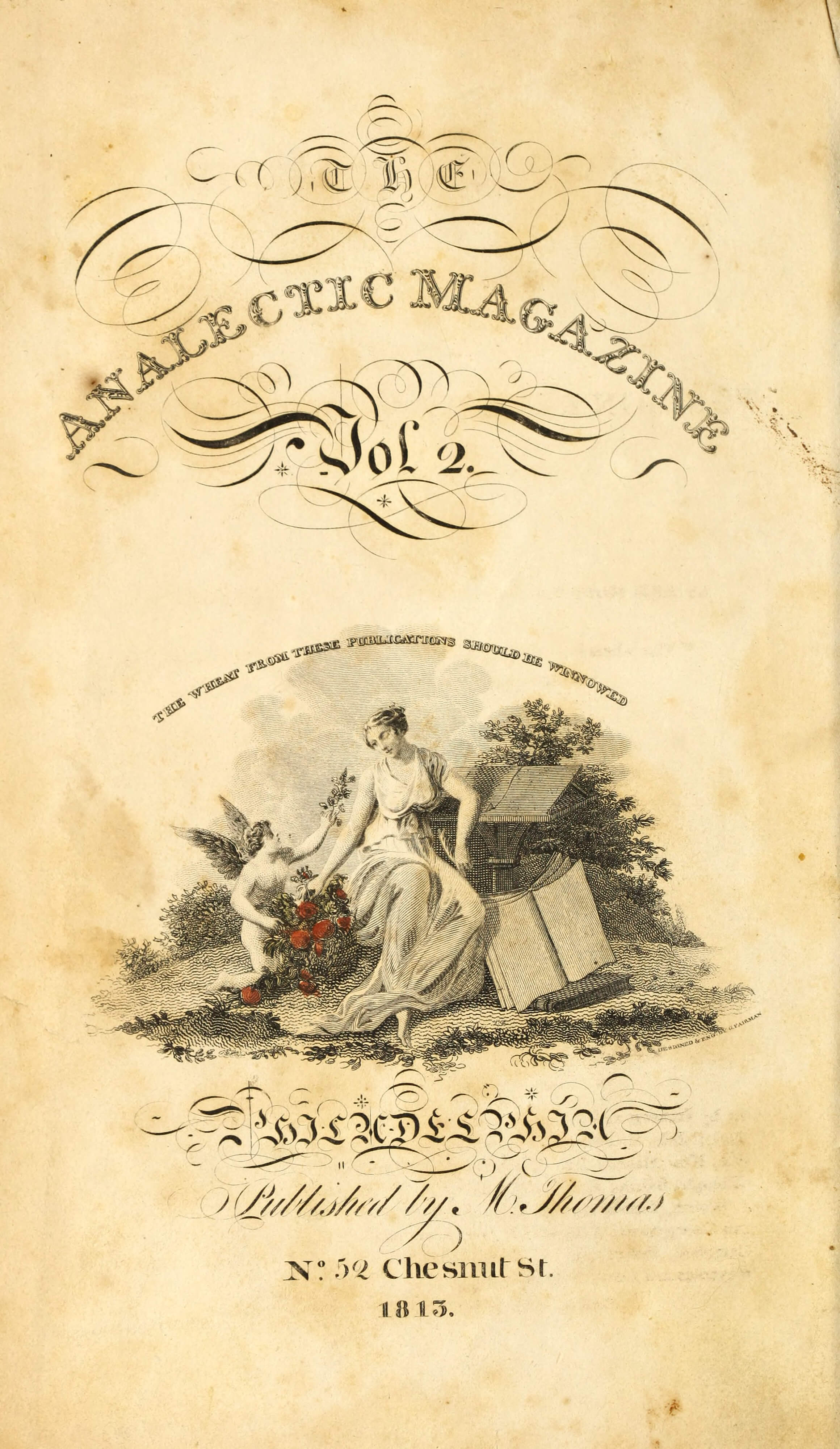Analectic Magazine (Prior revision dated Saturday 16 September 2023 03:17:13 -- @178)
The Analectic Magazine was a literary and news publication in the United States that existed from 1813 to 1820. Published in Philadelphia, it was first managed by Moses Thomas and later by James Maxwell. The magazine had an array of content, comprising original reviews, biography, analytical abstracts of new publications, translations from French journals, and selections from the most esteemed British reviews. It often reprinted articles from the British press, and provided extensive book reviews.
Notable in its history, the Analectic Magazine published the first lithograph ever made in America in the July 1819 issue, which depicted a woodland scene featuring a flowing stream and a solitary house on the bank. This significant lithograph was created by Bass Otis.
Adding to its prestige, the Analectic Magazine was once edited by renowned American writer Washington Irving from 1813 to 1814. Among its avid readers was Thomas Jefferson, the third President of the United States. Correspondence detailing Jefferson's subscription to the magazine can be found in the U.S. National Archives.
The Analectic Magazine covered a wide variety of topics. For example, it featured an essay on the life, writings, and opinions of French statesman Mr. de Malesherbes by the Count de Boissy d'Anglas; Rand's System of Penmanship, with instructions, published by the author in Philadelphia; and Notes on the Missouri River and some of the Native Tribes in its neighborhood by a military gentleman attached to the Yellowstone Expedition in 1819. It also translated works from French, such as Sismondi's treatise on Prejudices.
One of the most historical pieces of content it carried was the "Defence of Fort M'Henry" by Francis Scott Key in November 1814. This poem eventually became the lyrics of "The Star-Spangled Banner", the national anthem of the United States.
By 1820, Editor Maxwell fell ill, which led to the cease of the magazine's publication, marking an end to its brief but significant seven-year run.
I'm sorry, but I was not able to find information on the Ampersand's Entertainment Guide beyond its Wikipedia page due to time constraints. The magazine was aimed at college students and offered articles about music, arts, and entertainment. It was published from 1977 to 1989 and was distributed as a free supplemental insert to college papers. Its founders, Jeffrey Alan Dickey and Durand Weston{{Categories}}